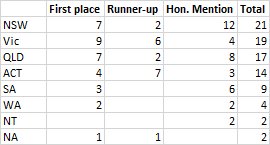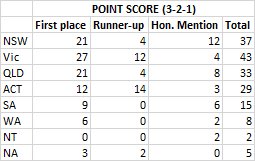Australia's Bureau of Meteorology (BOM) has copped a downpour of headlines for spending A$96.5 million on what some gleefully call “a website.”
That framing is catchy - but it’s wrong.
The public‑facing interface - the bit we click - cost about A$4.1 million.
The heavy lifting was a complete rebuild and testing of the systems and technology behind it: ingesting vast volumes of observations and model outputs, securing them, and serving them at national scale, reliably, every minute of every day.
In other words, the BOM didn’t buy a slick homepage; it rebuilt the foundation that gets critical environmental intelligence to Australians on a timely basis - whether they’re at the airport, on the farm, or fighting a fire (as I did yesterday).
This effort didn’t happen in isolation. It sits alongside BOM’s seven‑year ROBUST technology program, which upgraded cybersecurity, networks, data centres, a disaster‑recovery supercomputer, and the national observing network (including dual‑polarisation radars). By closure in mid‑2024, ROBUST had invested A$866 million to harden Australia’s environmental intelligence backbone after the bureau’s 2015 cyber breach and outages. That’s the plumbing you don’t see when you load a forecast.
So, what failed? Not the core project goal—modernising national infrastructure—but the communication and release strategy.
The new site launched into severe weather, and ordinary users and power users alike found basic tasks harder: radar colours felt off, local details were buried, familiar navigational cues had shifted.
The backlash was immediate; ministers demanded fixes; BOM reverted radar visuals and committed to rapid improvements. Timing, messaging and usability were misjudged—and they matter.
This is where “low‑hanging fruit” counts. When you’re redeveloping an entire weather reporting and dissemination system for a country, the public expects familiar wins to land early: clearer local pages, consistent radar palettes, quick paths to wind, rain and temperature. BOM missed several of these, and the community told them—loudly. The lesson isn’t “don’t modernise”; it’s design with users, ship the obvious wins first, and narrate the journey.
User testing should never be a checkbox; it’s your pre‑flight weather check. That means beta programs, co‑design with sector users (farmers, SES crews, pilots), and A/B testing for navigation and visuals so you learn what works before you re‑platform at scale.
If industry best practice says test early, test often, test live - heed it. A handful of controlled experiments can surface friction months before a national launch.
But why was there so much fuss over plumbing? Because weather intelligence is critical infrastructure. Agriculture uses it to time planting and spraying; fisheries plan around marine forecasts; aviation and defence rely on tailored briefings and feeds for safe operations; emergency services need resilient ingest and rapid warnings when floods and fires escalate. It’s a national capability upgrade serving safety, the economy and national security.
In a world of constrained trust, how you deliver matters almost as much as what you deliver. Publish the cost breakdown early (front end vs back end). Explain the architecture in plain English. Stage releases. Keep the radar legible and familiar.
And treat feedback as flight data, not turbulence: respond visibly and fast. That’s how you reduce reputational risk while raising technical resilience. It’s also how governments maintain confidence in big tech investments.
If I were coaching an agency on a transformation of this scale, my pragmatic checklist would be:
- Mission first, interface second. Lead with the purpose: warnings, safety, continuity. Then show the pixels.
- Ship the obvious wins early. Keep users fed with the basics - clear radar, local conditions, one‑click access to wind/rain - while deeper systems evolve.
- Co‑design and A/B test. Put farmers, SES, pilots and fishers in the cockpit; instrument the site; run controlled trials before national rollout.
- Stress‑test comms like the platform. Prepare explainer packs, diagrams and FAQs; brief ministers and media ahead of launch; communicate changes and reversions promptly.
- Be resilient and transparent. When a severe weather season collides with deployment, delay updates that add risk, and explain why. That’s good ops and good public service.
Bottom line: the BOM didn’t just build a website. It rebuilt resilience.
That said, the public frustration is real, and instructive. The BOM tried to fly below the radar, but forgot that it IS the radar. A critical service Australians rely on and mostly love. The criticism becomes that much harsher when things appear to go wrong with something we love.
However when we combine world‑class infrastructure with world‑class user practice - co‑design, beta, A/B testing, signalling changes, staged releases and plain‑English comms - we can get a platform that stands up to cyclones, cyber threats and criticism alike.
That’s the point of flying above the radar: you see any storms sooner, and can steer accordingly.


















